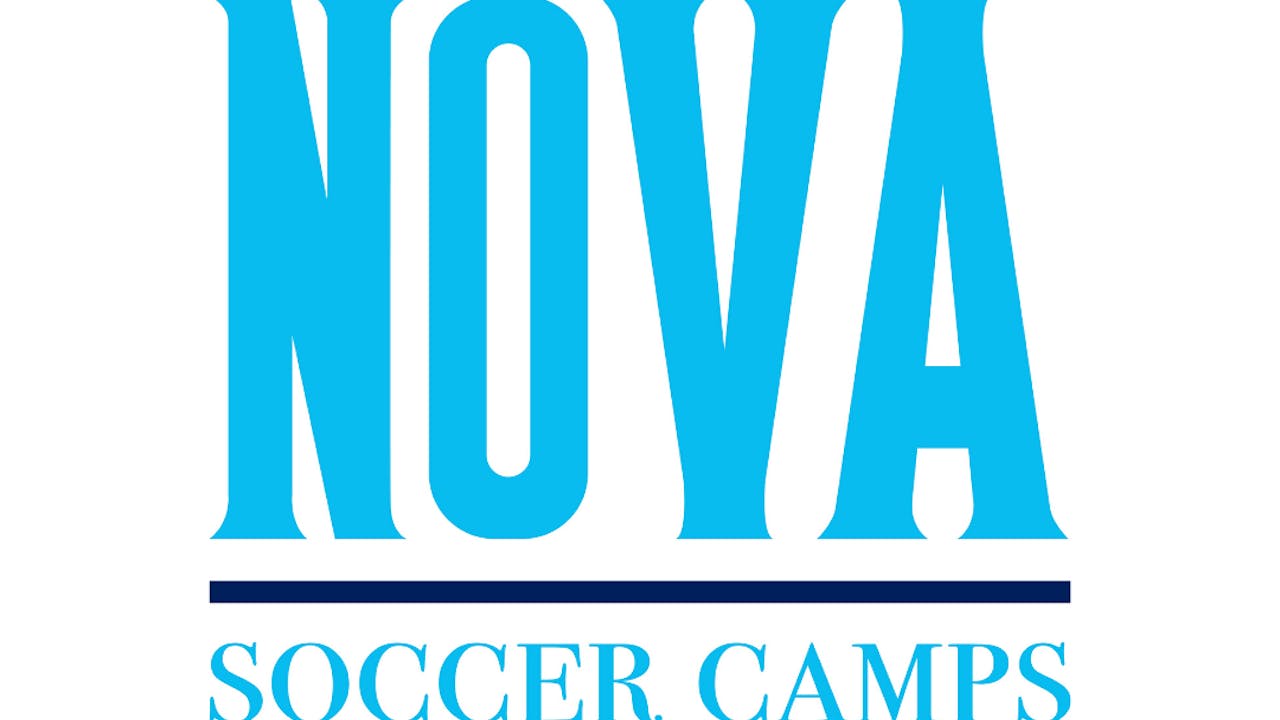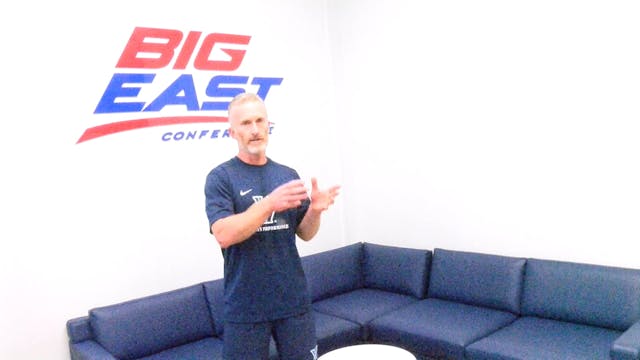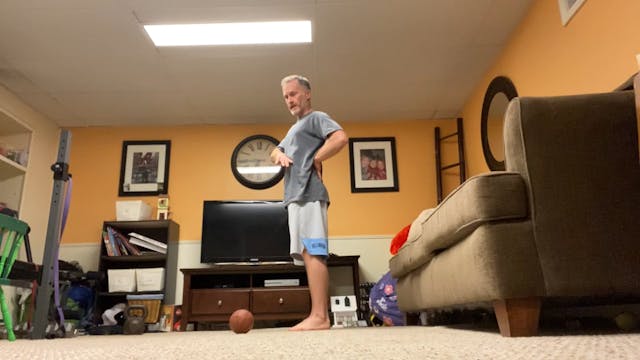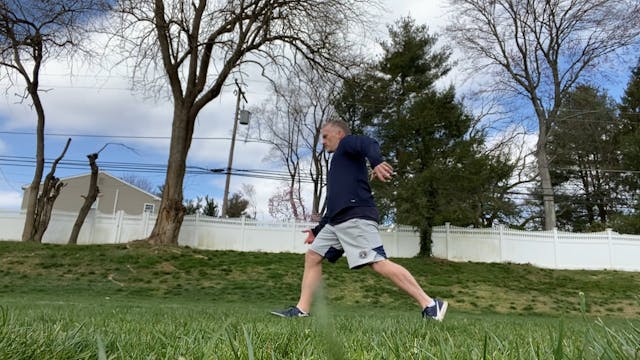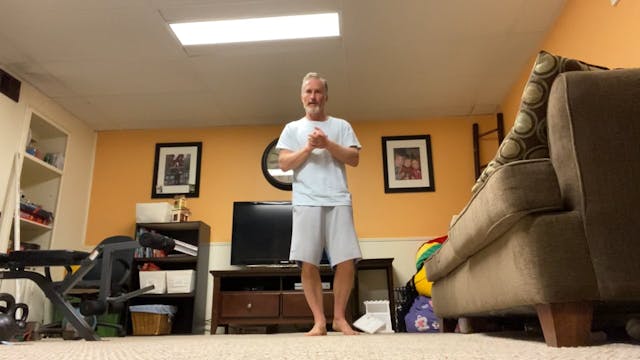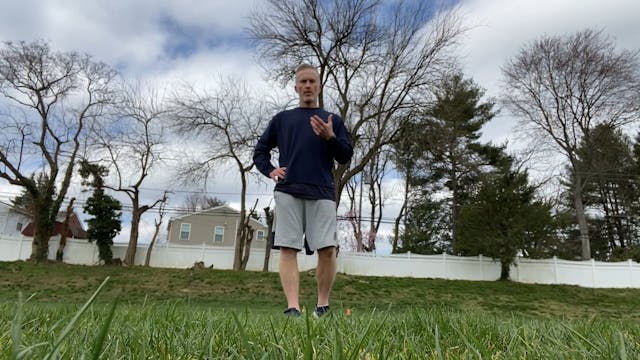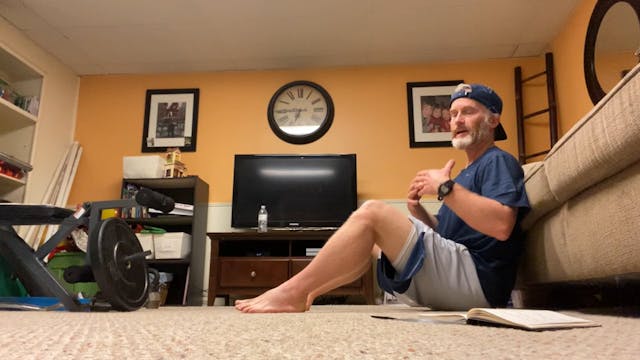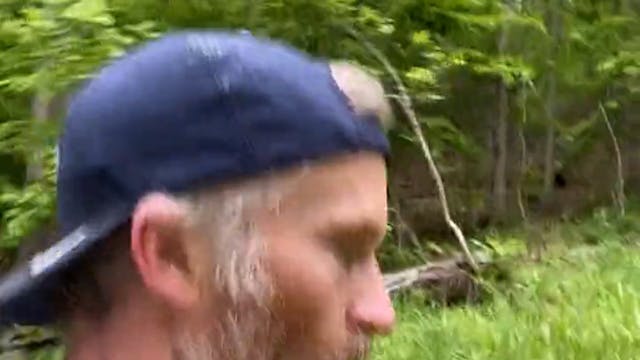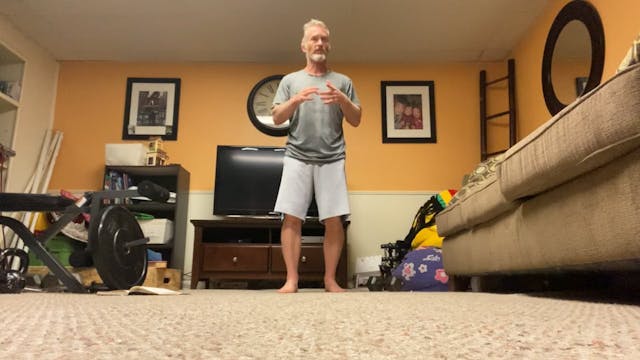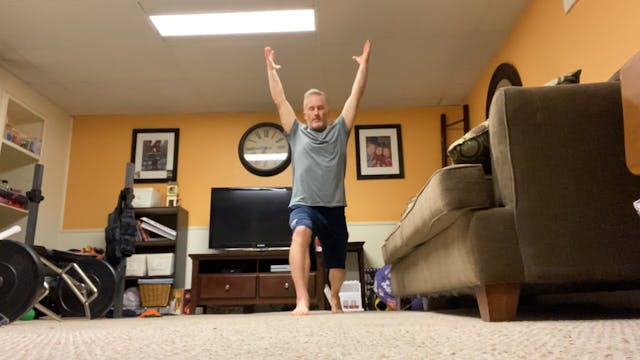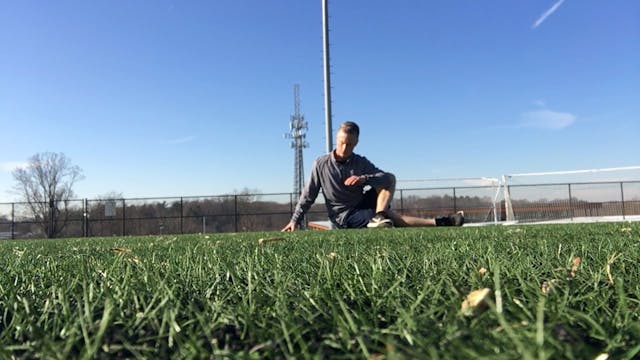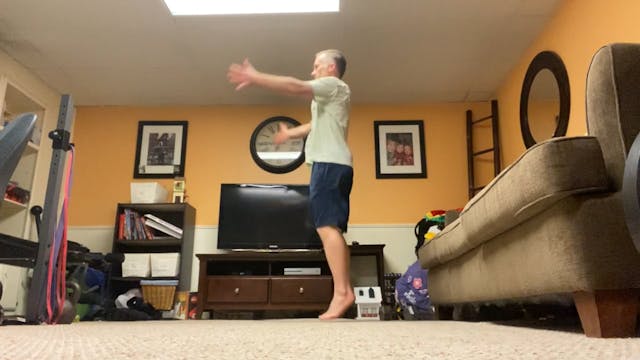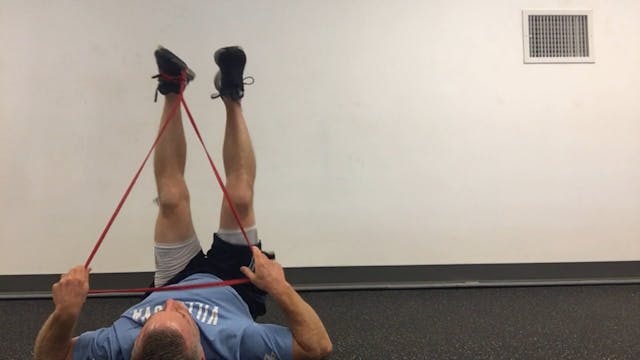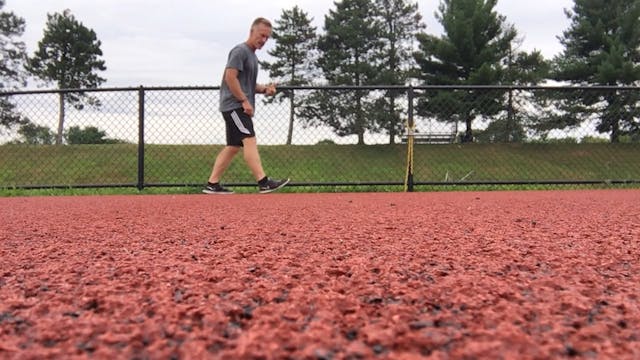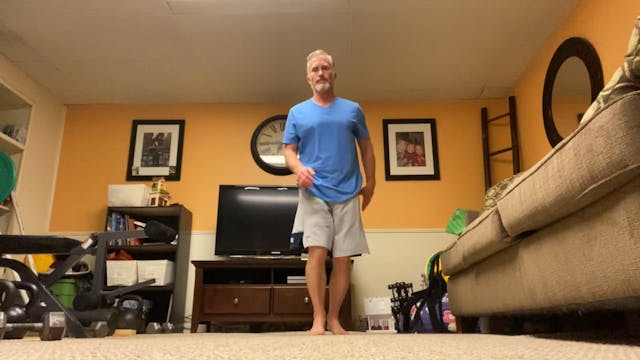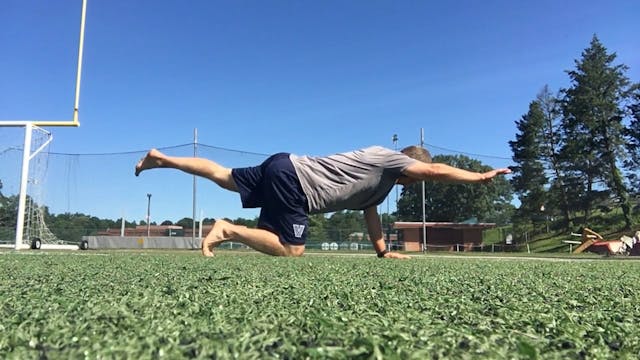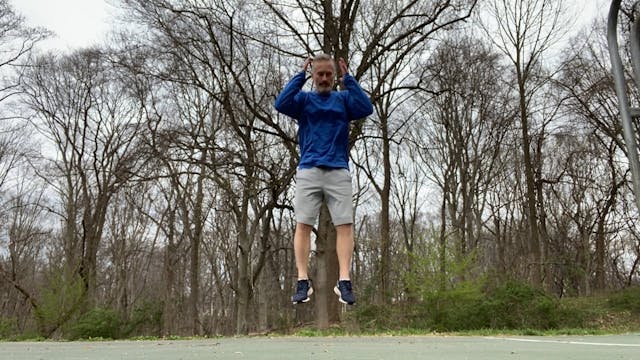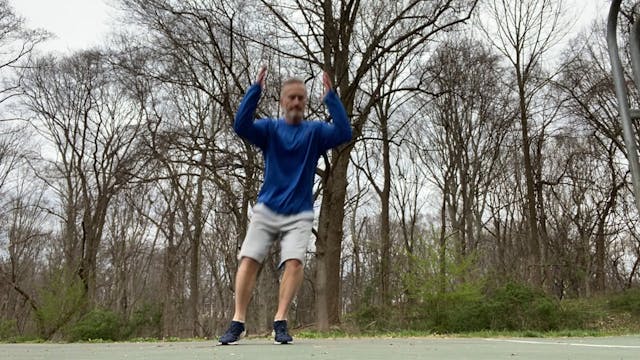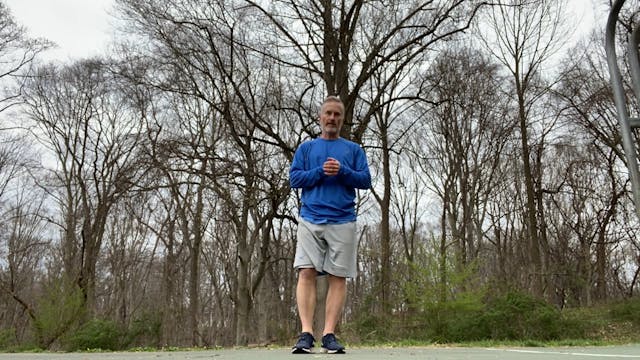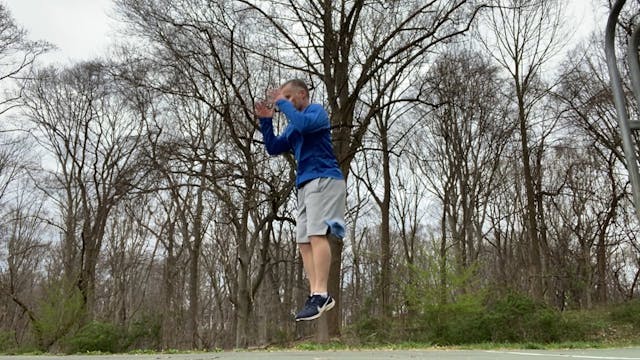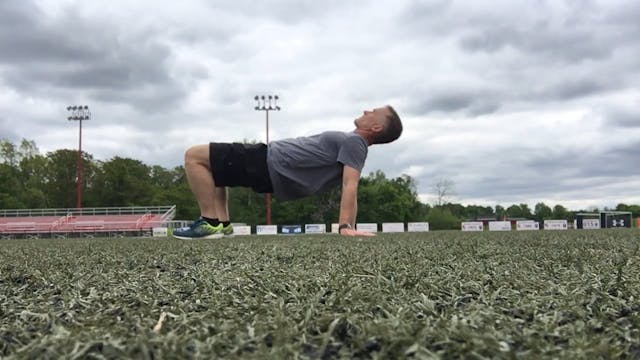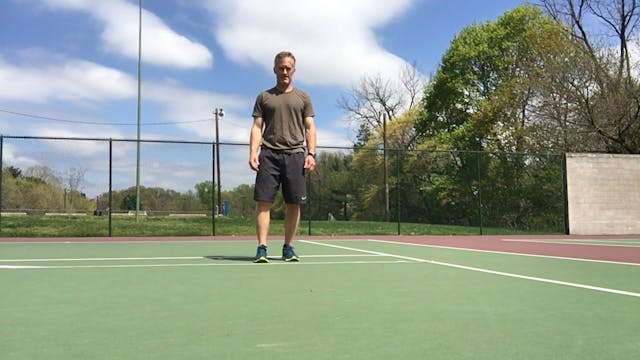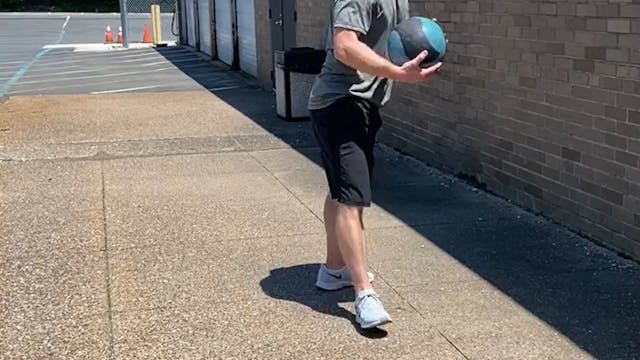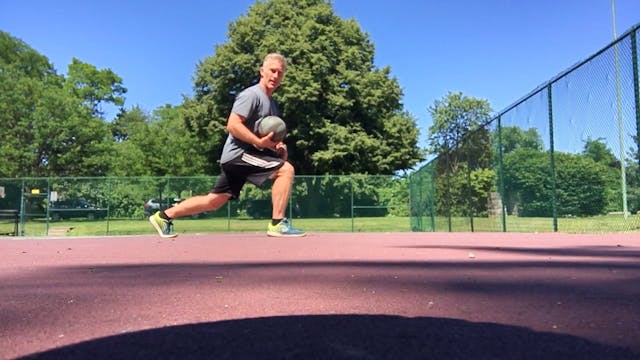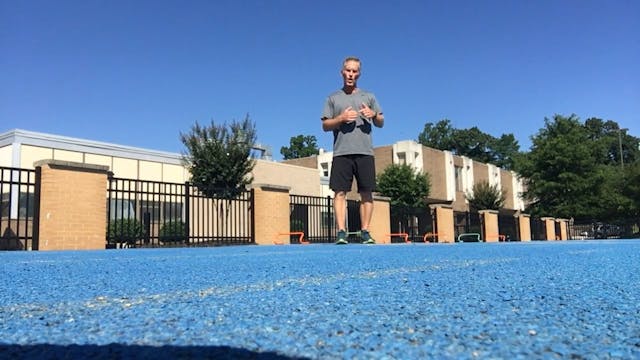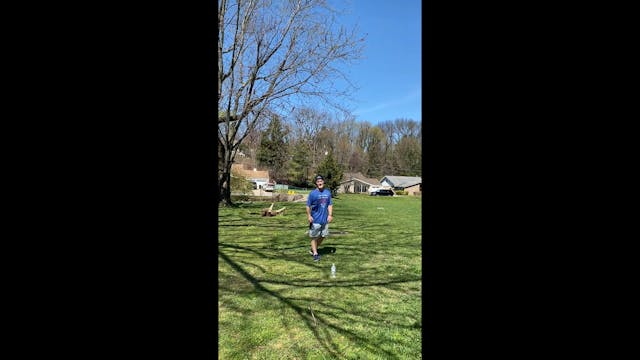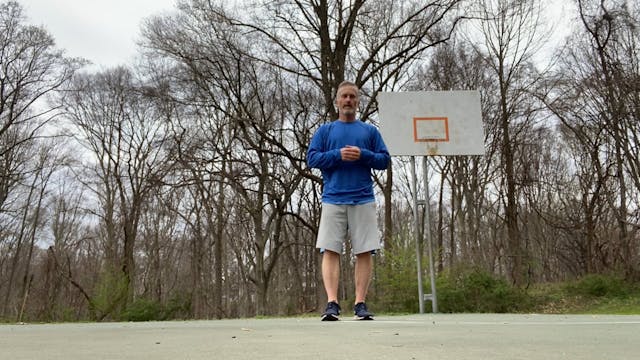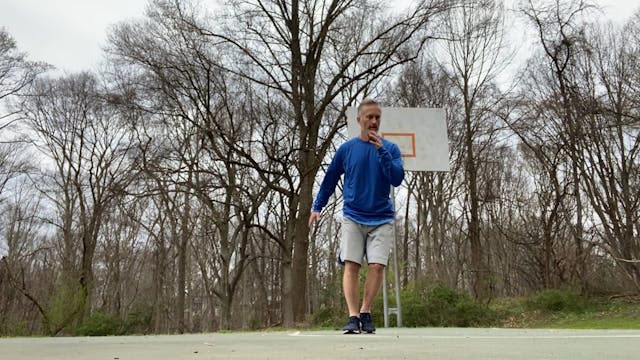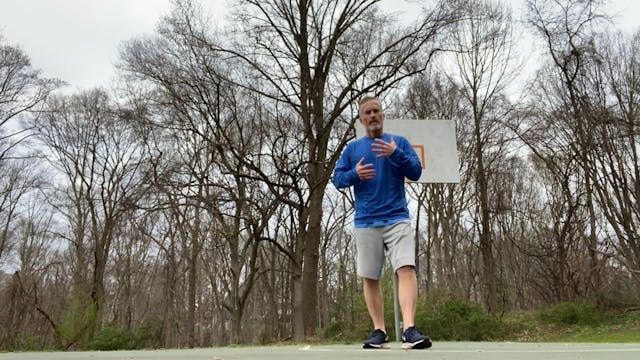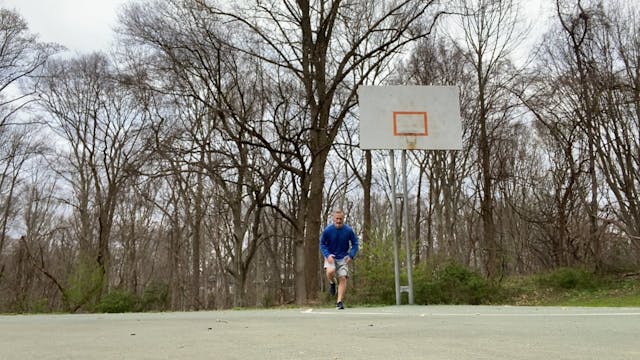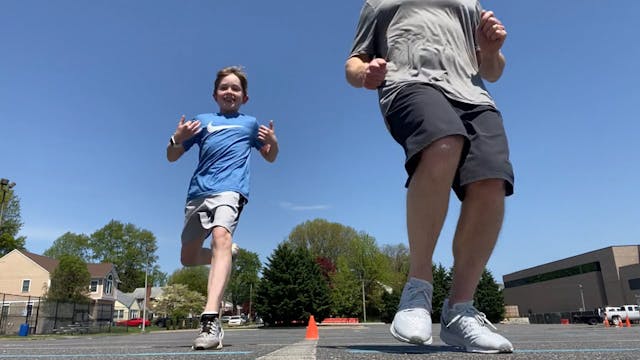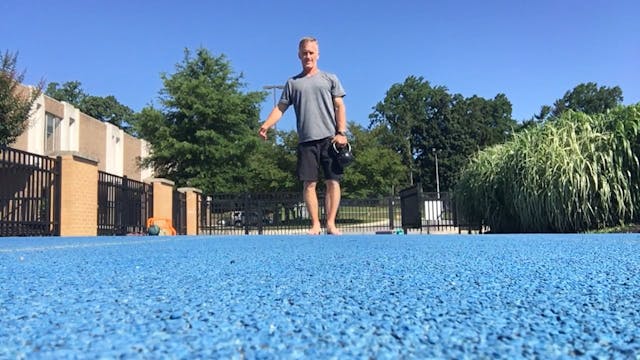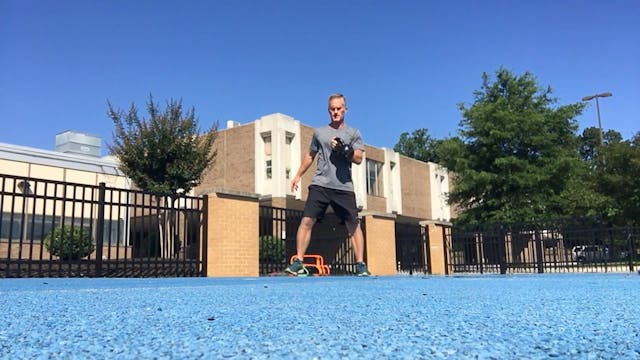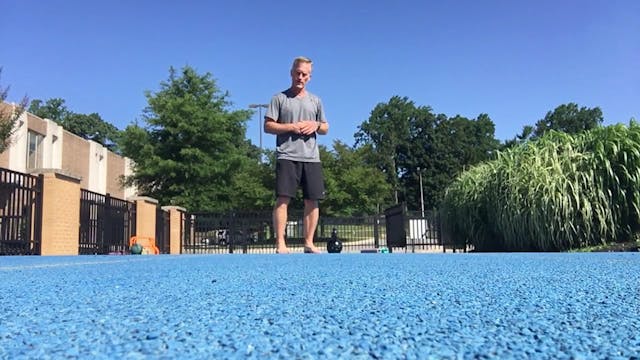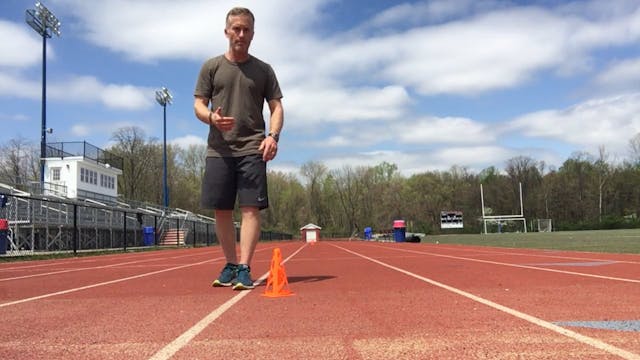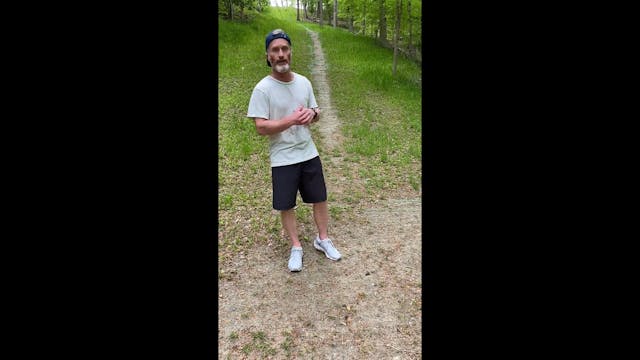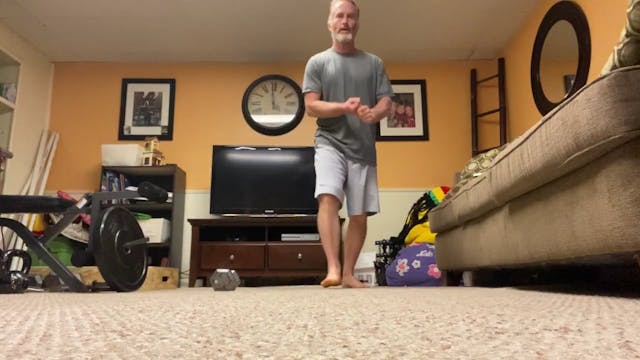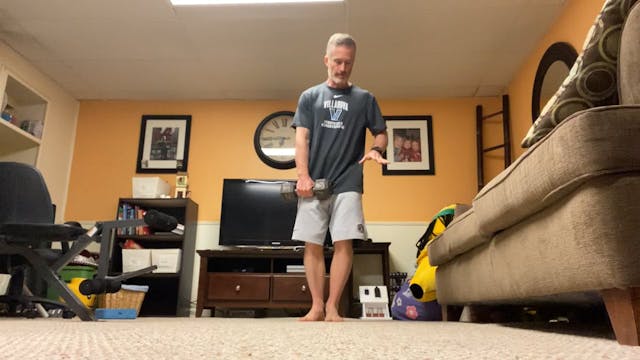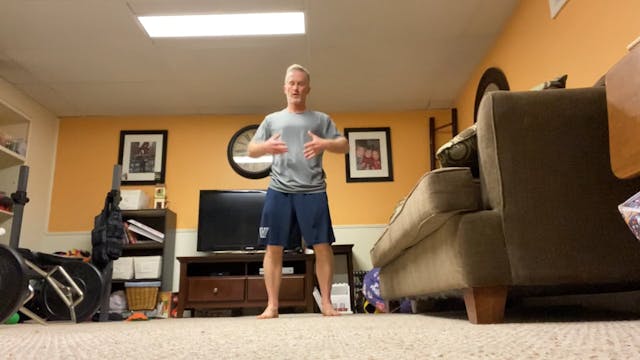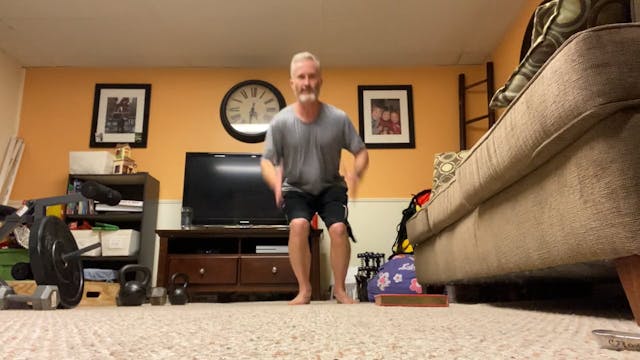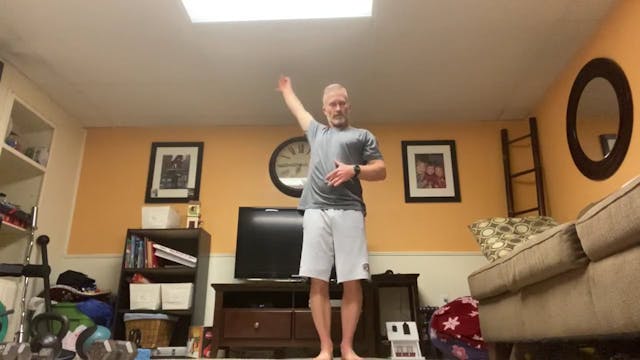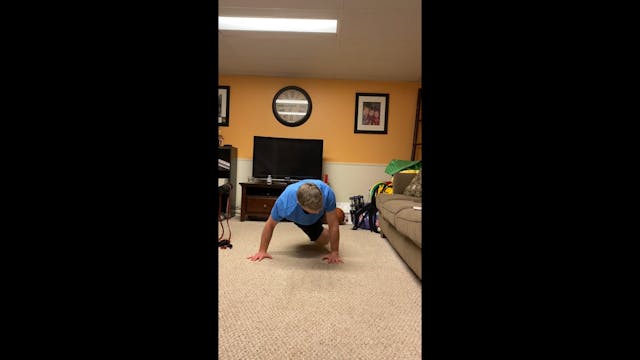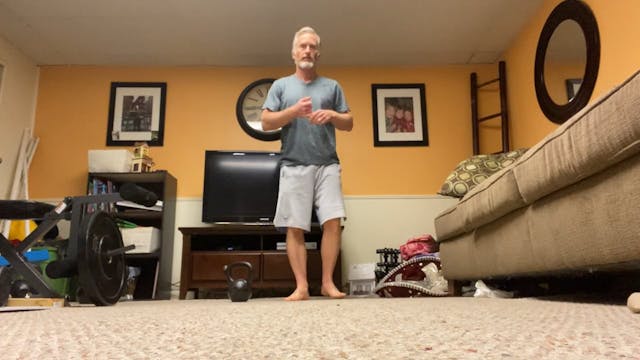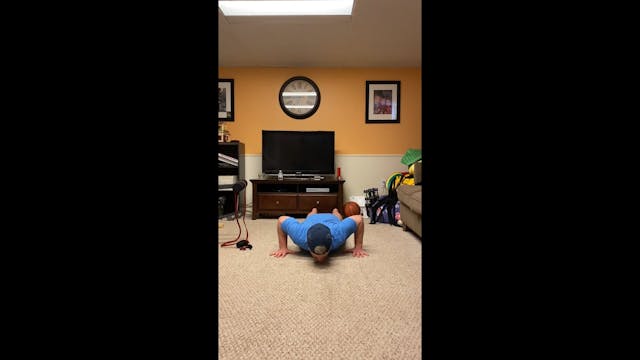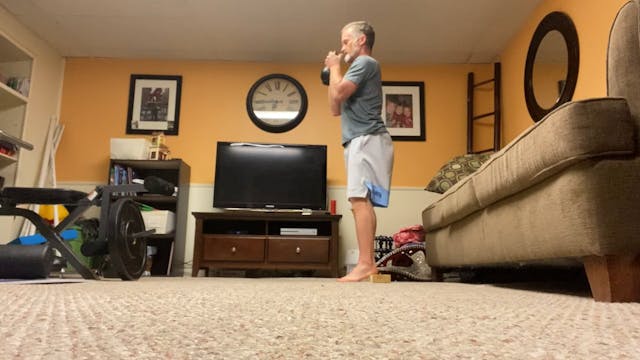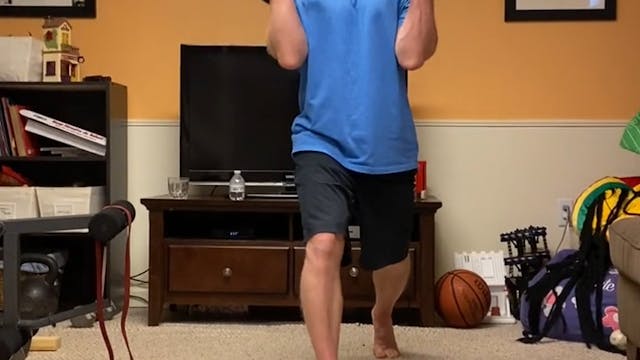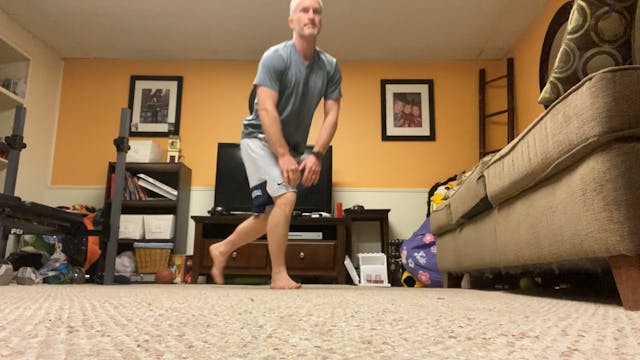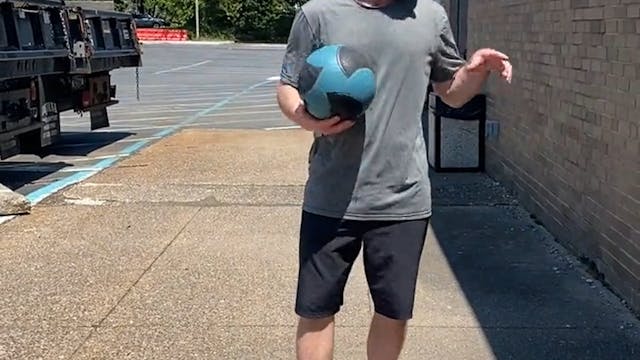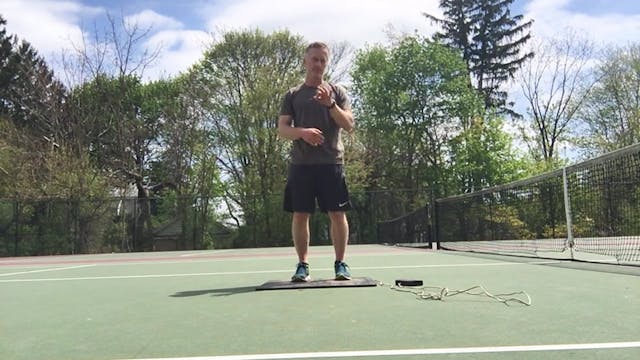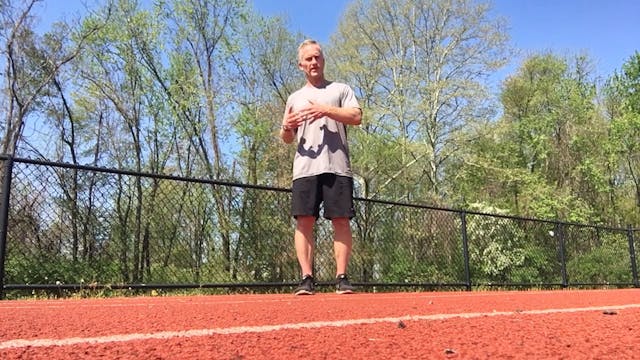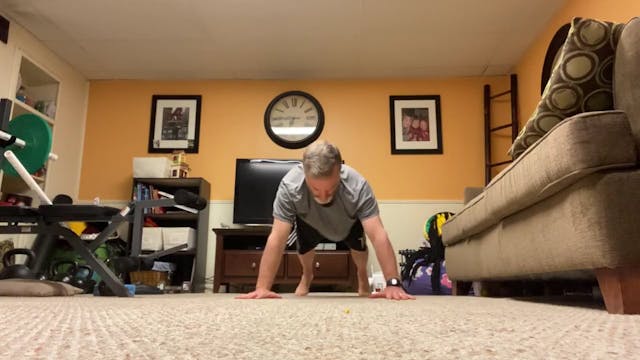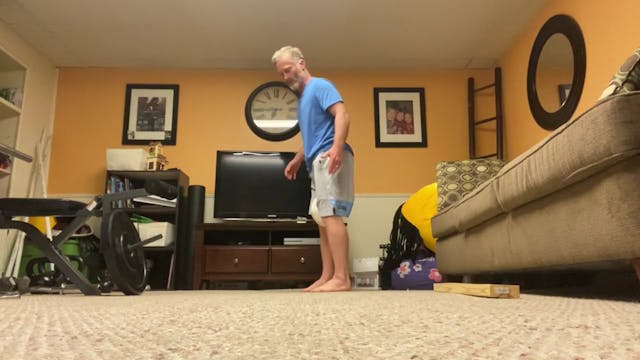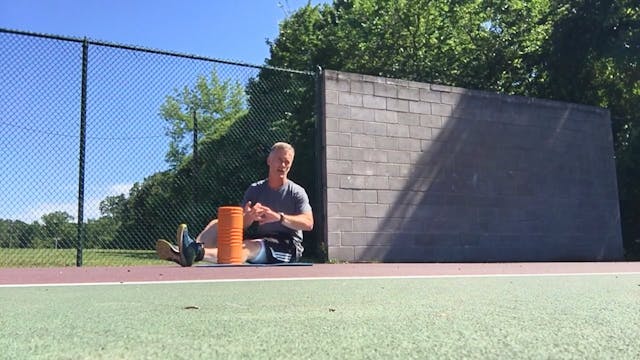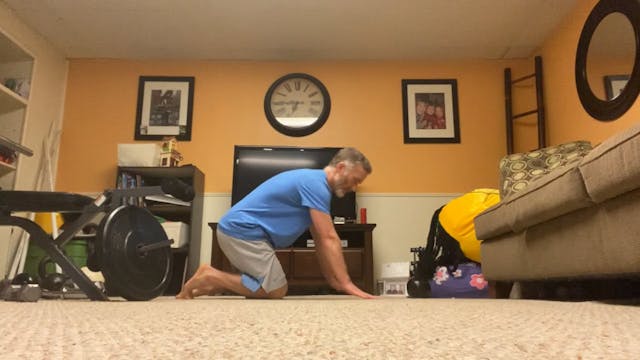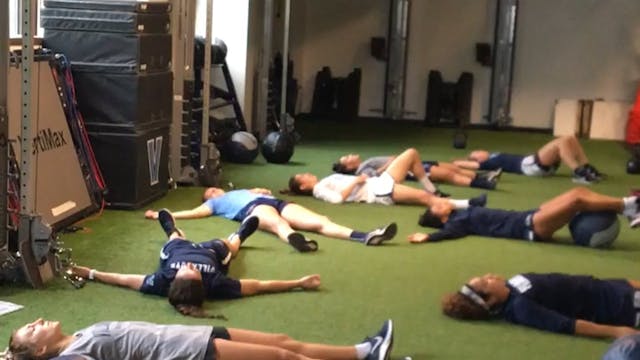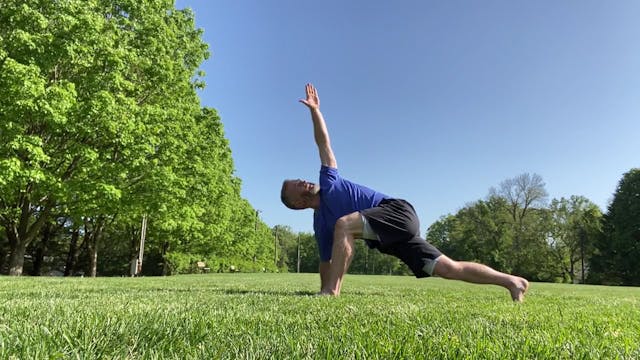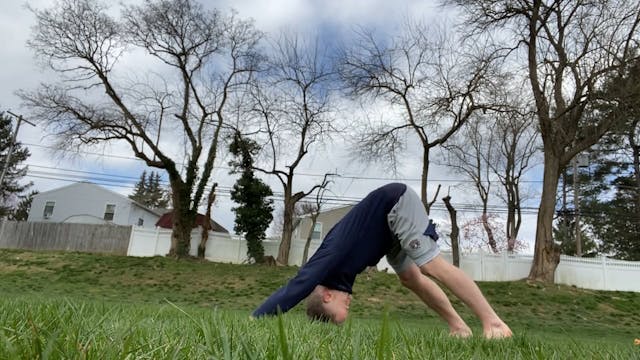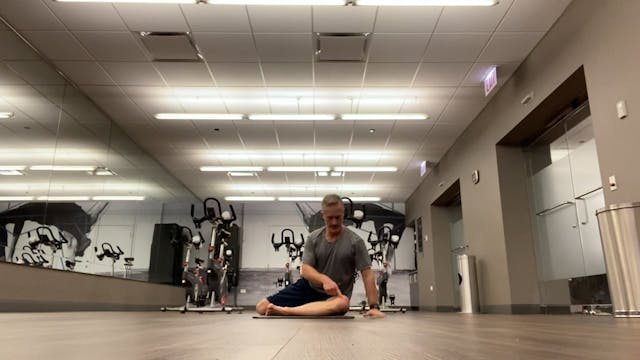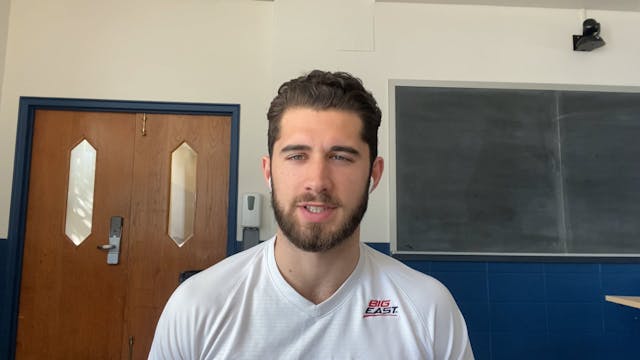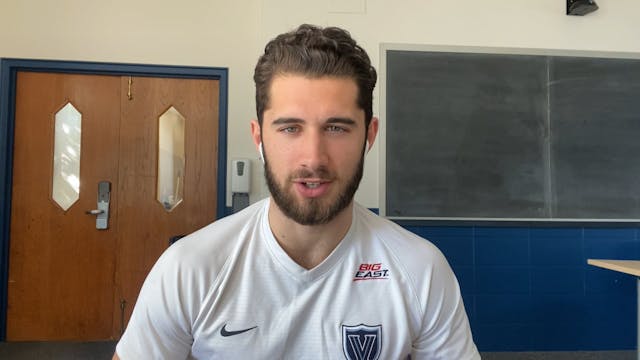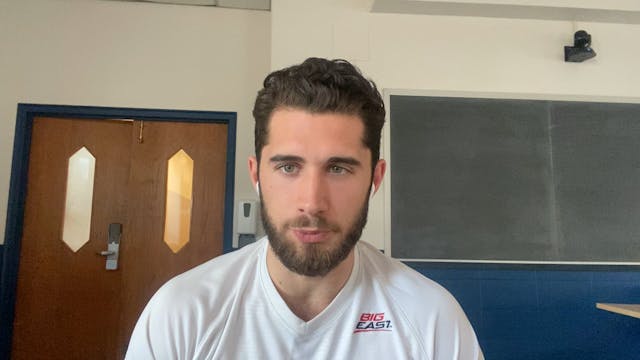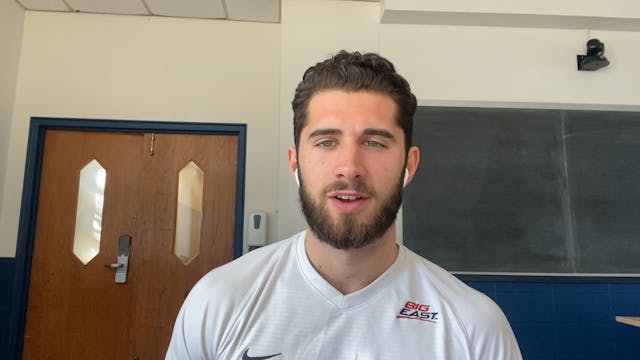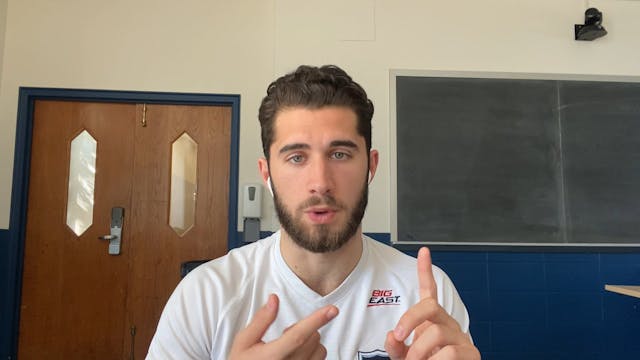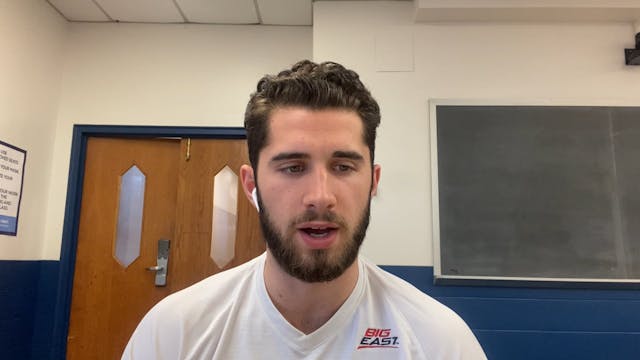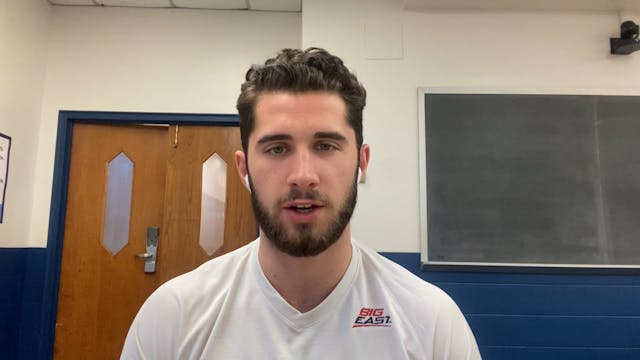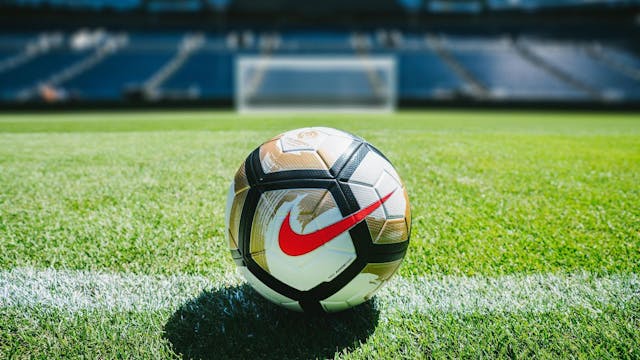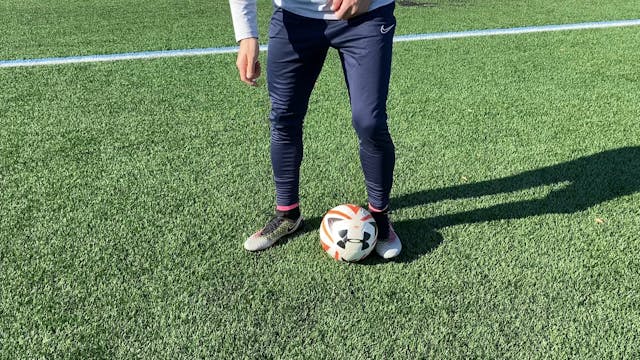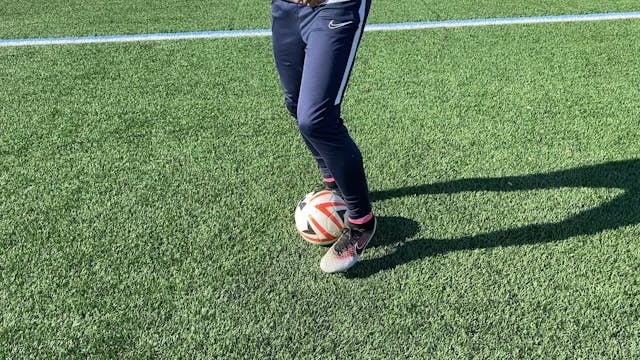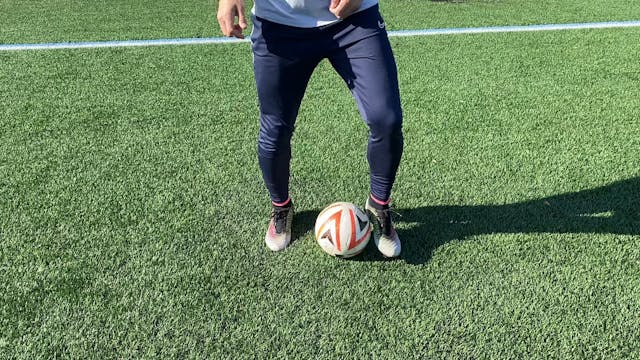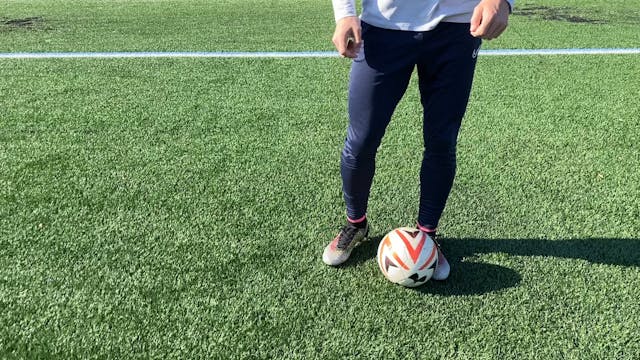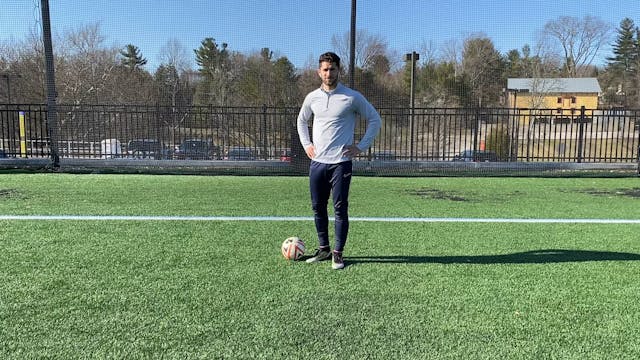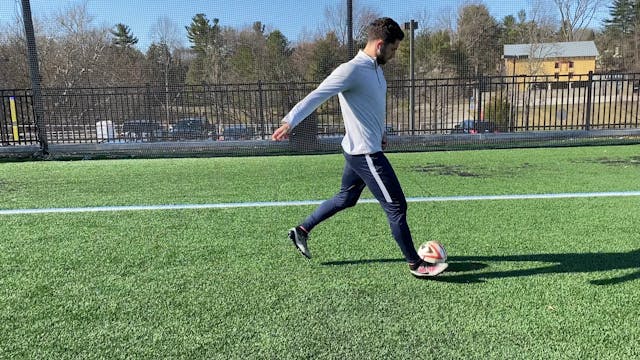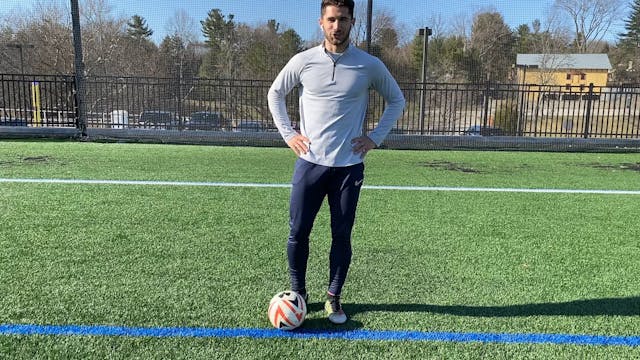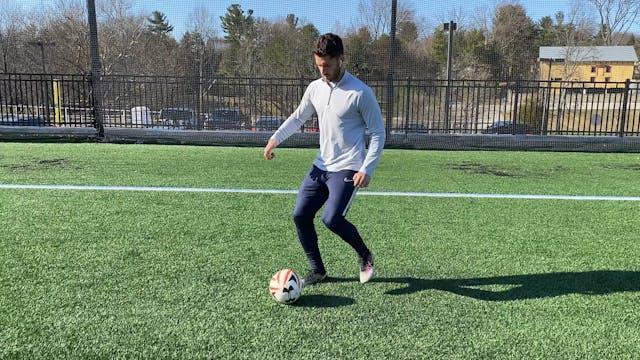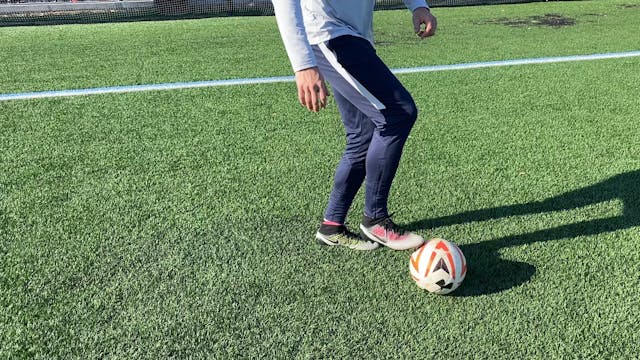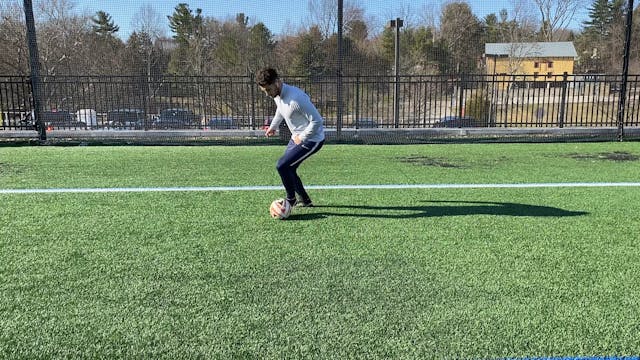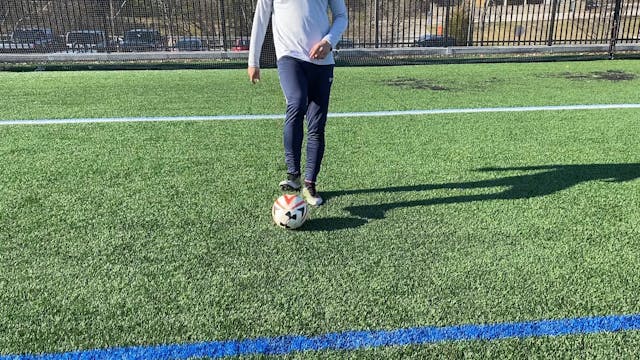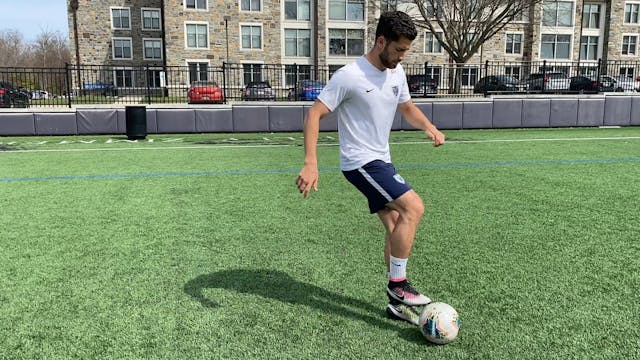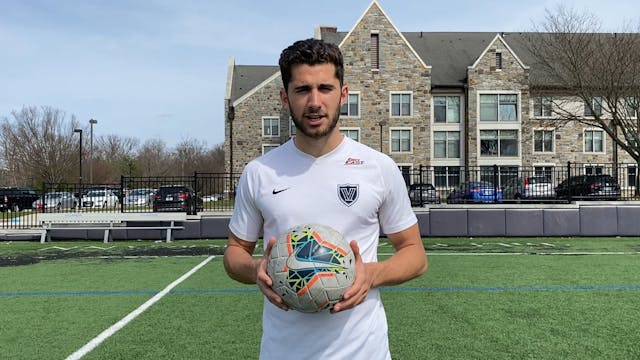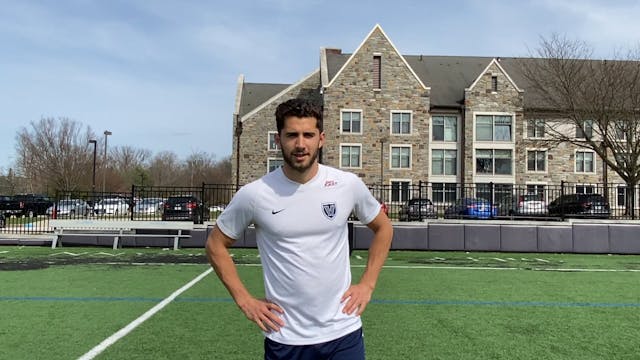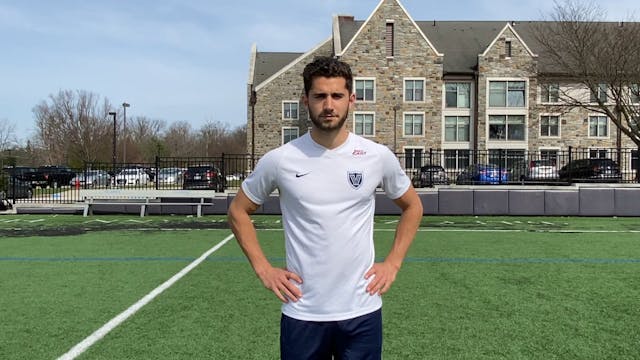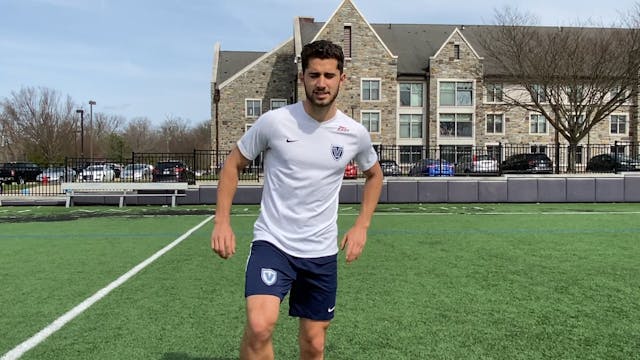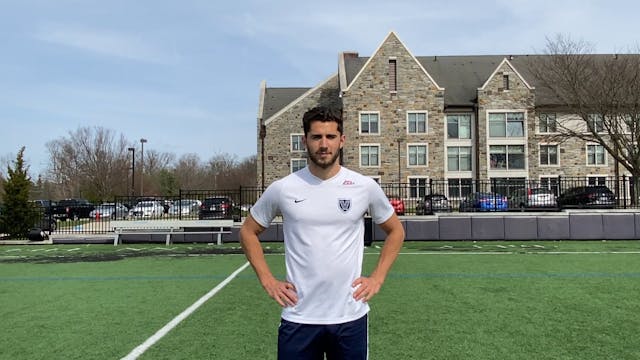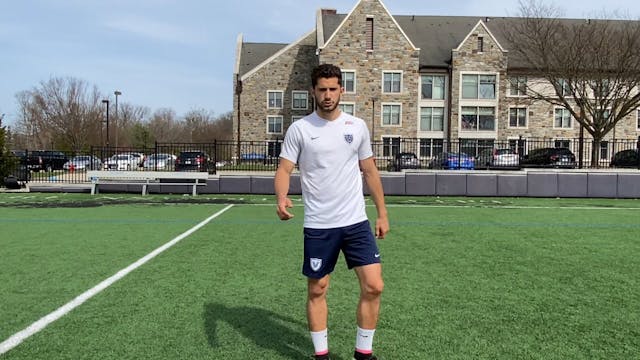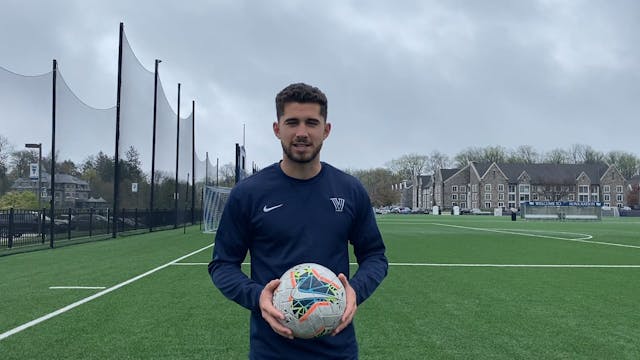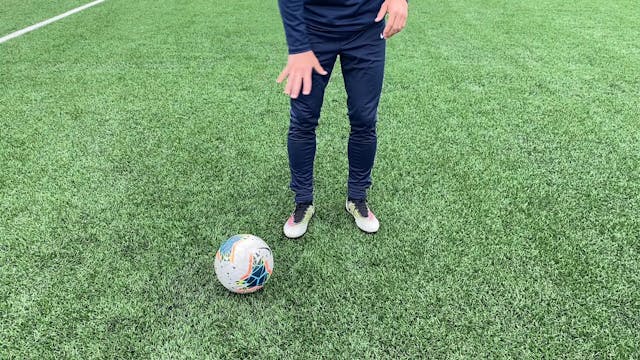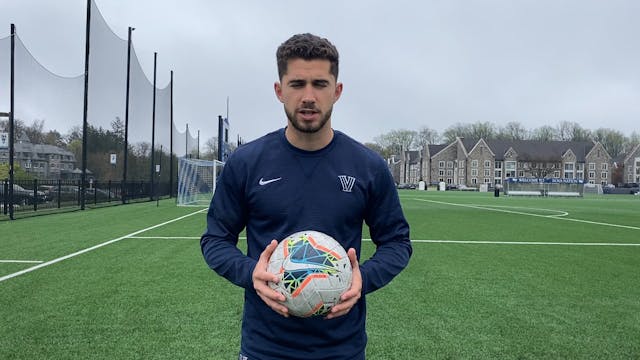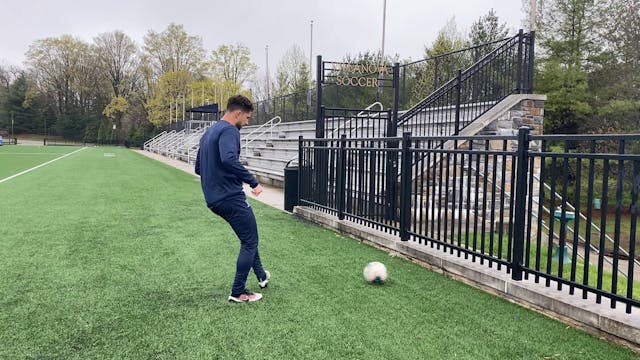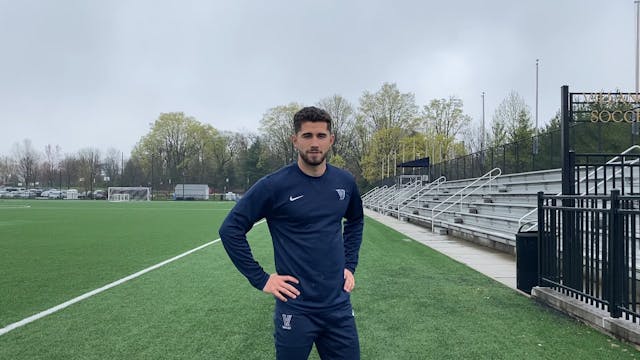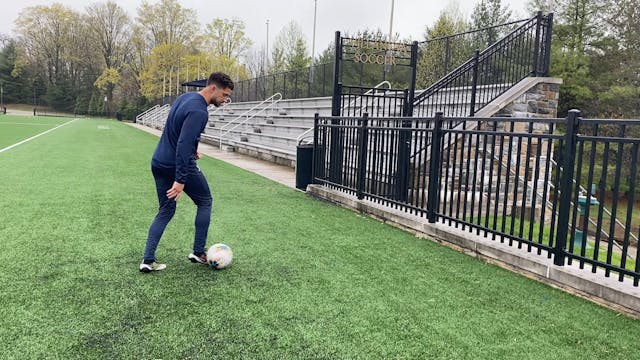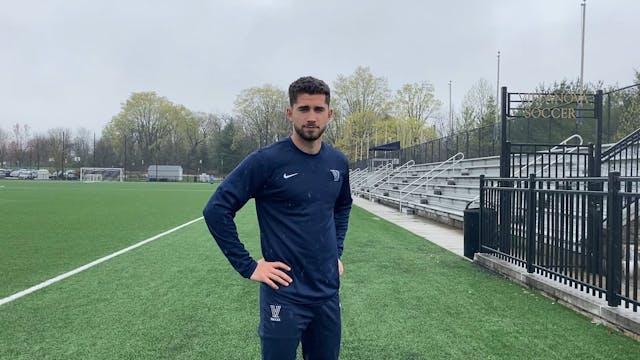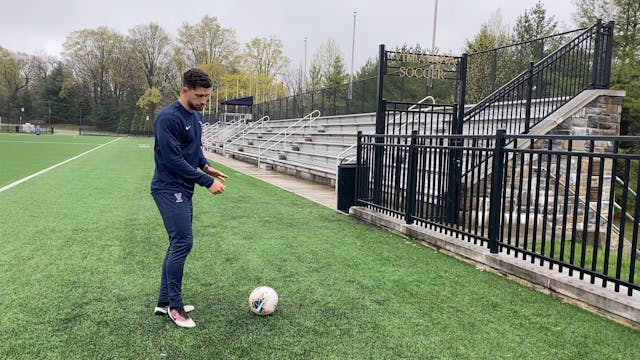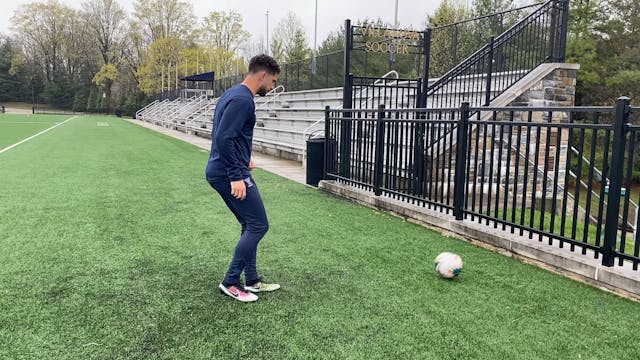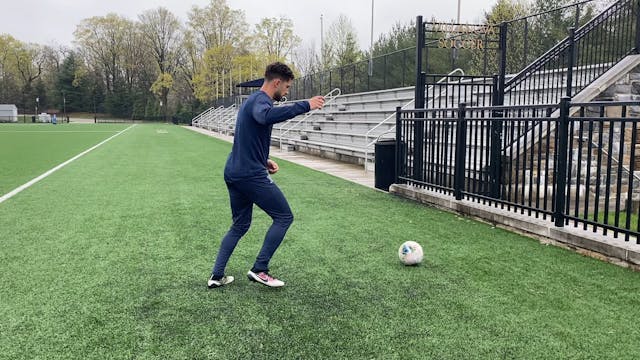Full Access Pass
Access to the entire site including the entire video library.
Includes all Junior Soccer videos and all College Preparation Videos.
-
An Introduction from Kevin Miller
Kevin's coaching philosophy is at the foundation of his success as a sports performance coach. Kevin has worked with professional soccer teams as well as with the Villanova men's and women's soccer programs. He is a fantastic resource for student athletes at Villanova. In this performance package...
-
Foundation 1. Exercises for Posture
Good posture is extremely important for all athletes. Soccer players are constantly pushing their body by changing direction, accelerating, and decelerating. Poor posture can result in injuries and poor technique. Pay attention to these exercises and improve your posture.
-
Foundation 2. Basic Movements to Master
Here, you will learn the correct technique for the push up, the body weight squat, the single leg lunge, and the squat jump. These are key exercises that, if performed correctly and consistently, will help you become a stronger athlete. These exercises will be involved very often in your training...
-
Foundation 3. Exercises to do Every Single Day
Make sure you develop your technique for these exercises.
Every day these exercises can be included or added on to any training that you have:
2 x 10 Single Leg Reach
3 x 10 Push ups
3 x 5 Single Led Side Lunge -
Foundation 4. How to Breathe When Training
Breathing is not complicated but is often overlooked when it comes to training. The importance breathing has on performance and recovery should not be understated. Be mindful of your breathing while you train - it will make you a better athlete.
-
Foundation 5. How Long Can You Exhale
The longer you can exhale, the more your body will be able to tolerate carbon dioxide. This is critical to sports performance but also has huge health benefits.
Perform this exercise after a workout and it will double as a cool down recovery exercise. -
Foundation 6. Learn to Push Yourself
Your body is capable of more than your brain gives credit for. Always be smart when you are training but know that you will, more often than not, be able to perform one more rep or one more run than you think you can. Be smart but be willing to push yourself.
-
Foundation 7. Lifestyle
1. Sleeping Pattern - Go to sleep at the same time every night and wake up at the same time every morning. The health benefits to this practice are substantial.
2. Nutrition - Eat the healthiest food you can afford. This might be difficult if you are not in charge of your groceries, but do what y... -
Preparation 1. Minute Warm Up
Warming up before working out is vital. However, you don't always need to spend ages on your warm up. This video shows you a warm up that only takes a few minutes to execute. Don't begin your workout if you feel like you need to continue stretching or warming up - you know your body better than a...
-
Preparation 2. QL & IT Band Stretch
The QL (quadratus lumborum) and IT band are muscles that stabilize your hip. They are difficult muscles to stretch but this exercise should help you target them.
-
Preparation 3. Another Short Warm Up
Always listen to your body. If you need to take more time warming up to prepare for a workout, don't hesitate. Avoid rushing into exercise without a warm up. This particular warm up is great if you only have a couple of minutes before your training session begins. It's short and hits the major mu...
-
Preparation 4. Band Stretching Routine
These stretching exercises will prepare your hamstrings, groins, hip flexors, and quads for a tough workout. This entire routine only takes a couple of minutes and will help decrease the risk of injury from overstretching. Your leg muscles are absolutely crucial to soccer therefore significant ef...
-
Preparation 5. Running Warm Up
This short routine is fantastic to do before a running workout.This is more extensive than the previous workout videos and will prepare you for more vigorous exercise.
Begin by focusing on your breath (more videos available on breath work).
This warm up will also work on the psoas muscle (Here's ... -
Preparation 6. 5 Minute Warm Up
More warm up exercises to add to your warm up routine. It's great to keep modifying your warm up - mostly to keep it interesting and engaging. Otherwise you run the risk of your warm up becoming mundane and boring. If this happens, it becomes easy to simply go through the motions of a warm up. Th...
-
Preparation 7. Reset Warm Up
This is a super quick, super easy routine that you can perform when you wake up, before a workout, or before bed.
Combine these exercises with other warm up routines from this series.
Listen to your body and don't do any exercise that cause pain. Know the difference between pain and discomfort. -
Speed Training 1. Extensive Vertical Jump
Reps for this exercise should be between 10-15.
Make sure you are performing with proper technique.
This exercise can be paired with other exercises in this series.
After a day of intense speed training, make sure you allow time to recover. Performing strenuous exercises like these everyday will ... -
Speed Training 2. Extensive Side to Side Hops
High reps 8-15 per side.
Add this exercise into your speed training program.
This exercise is great for developing the quads and gluteal muscles. -
Speed Training 3. Single Leg Extensive Hops
Make sure that you do not land with a locked leg.
10 - 15 reps each side.
Add this into your speed training program along with other exercises in this series. -
Speed Training 4. Extensive Rotational Jumps
Combine this exercise with other is this series for a complete workout.
Extensive exercises like these should only make up 5-15 minutes of your workout. If you are doing more than this you risk putting too much stress on your joints.
Allow sufficient time for recovery after a speed training workout. -
Speed Training 5. Table Hip Lift
This exercise engages your gluteals and abdominal muscles.
This is a great exercise to include in a speed training workout. -
Speed Training 6. Standing Broad Jump Test
Land soft.
Do not land with your butt below your knees.
Record from the back of your heel.
Record your progress every 2 weeks. -
Speed Training 7. Medicine Ball Extensive Rotary Throw
If you do not have a medicine ball, do not worry. This exercise can be replaced with body weight squats.
This is an exercise that you can build into your speed training program for further hip and core development. -
Speed Training 8. Split Stance Medicine Ball Sprinter Throw
Do not worry if you do not have a medicine ball. You can perform this exercise without a ball but with the same movement.
-
Speed Training 9. Mini Hurdle Sprints
If you do not have small hurdles, you can use shoes, water bottles, cones, or anything else that will not cause you injury!
This is a fantastic exercise to incorporate into your speed training program. -
Speed Training 10. Hill sprints
Find a hill, warm up, then sprint as fast as you can to the top of that hill.
Walk back down and take a minute or two to recover, then repeat.
Depending on the size of the hill, you should look to do between 3-8 of these sprints.
Make sure you allow enough time to recover after a workout involvin... -
Speed Training 11. Intro to bounding
Find a bounding exercise in the next video.
-
Speed Training 12. Lateral lunge
-
Speed Training 13. Lateral bounce & stick
-
Speed Training 14. 45 Degree Bounding
A good warm up is vital for this exercise.
Bounding is a great way to work the muscles used when you sprint. Therefore it is a great addition to your speed training program. -
Speed Training 15. 10 x 10 Repeat Sprints
This is a great exercise that requires very little setup and equipment.
Make sure you get a good warm up before sprinting.
Make sure you allow enough time to recover after this workout. -
Speed Training 16. KB Single leg DL
-
Speed Training 17. Lateral lunge + clean + Rev Lunge
-
Speed Training 18. KB Swing
-
Speed Training 19. 150 yd shuttle run test
-
Speed Training 20. Hill Training
If you want to become a better athlete, it is important that you set goals for yourself. It's important that you challenge yourself to achieve those goals. You might not be able to do this every day, but you should definitely do something once a week that pushes you - whether this is physically o...
-
Strength Training 1. Total Body Workout (Emphasis on Upper Body)
Minimal equipment is needed for this total body workout.
Try to breath in through the nose throughout the whole workout.
Make sure you perform an adequate warm up before doing this workout (warm up exercises can be found in the Preparation Performance Package). -
Strength Training 2. Total Body Strength Power Workout
Exercises:
Squat Jumps: 5 reps
Squat Thrust: 5 reps (each side)
Split Squat with curl: 5 reps (each side)
Push Press: 5 reps (each side)
Single Leg Deadlift: 5 reps (each side)
1 arm row: 5 reps (each side)
Half Kneeling Dumbell Reach: 5 reps (each side)Complete this circuit 3-5 times.
-
Strength Training 3. Bodyweight Workout
Squat jumps, push ups, single leg lunges... these are some great bodyweight exercises that can be used effectively to build strength. Often, people skip bodyweight exercises and head straight to the weight rack - you can get a great workout without any weights!
If these exercises are performed co... -
Strength Training 4. Total Body Strength
Warm up, workout, and cool down. This hour long video contains an entire workout. Don't skip out on the warm up or cool down - they are just as vital to the workout as all of the strenuous exercises.
-
Strength Training 5. Density Workout
6 exercises for a great workout. Density workouts are all about setting a time and trying to finish as many sets of exercises as you can during that time.
This is a great way to measure your progress. Aim to complete at least one more set of exercises the next time you complete this exercise.
Thi... -
Strength Training 6. High Plank With Cross Body Marching
This is a great exercise for engaging your core. Add this exercise into a workout by doing 3 sets of 45 seconds of this exercise.
-
Strength Training 7. Split Stance 1 Arm Alternating Row
Do not worry if you do not have a kettle bell. Using a dumbbell is okay for this exercise.
-
Strength Training 8. Hand Release Push Up
-
Strength Training 9. Heels Elevated Goblet Squat
-
Strength Training 10. Split Squat 2 Hand DB Curl
-
Strength Training 11. Push Up Challenege
Push ups are a great body weight exercise. This 2 minute challenge is a good way to measure your strength training progress.
-
Extra: Med ball extensive circuit
-
Extra: Vertical Jump Test
-
Recovery & Mobility Intro - Active Recovery
Recovery should not be overlooked. It should actively be a part of any training program. In this video series, director of sports performance at Villanova, Kevin Miller, will provide recovery exercises and routines that you can add to your training program. These routines can be performed on your...
-
Recovery & Mobility 1. Yoga and Mobility
Mobility is crucial to soccer and is often overlooked when it comes to training programs. Ankle, knee, and hip mobility should be focused on as a soccer player. This yoga routine will help prevent injuries and improve your athletism.
-
Recovery & Mobility 2. Hip Mobility
Hip mobility is vital for soccer players. These exercises will be great to help you increase the mobility in your hips.
-
Recovery & Mobility 3. How to Foam Roll
While a foam roller will never replace the work of a manual therapist, it certainly has benefits that far outweigh the time it takes to roll out.
Foam rolling should not be painful. Watch this video to learn the basics of foam rolling to help maximize your recovery. -
Recovery & Mobility 4. More Yoga and Mobility
Focus on your breath.
Yoga might be frustrating but trust that the exercises you perform will make you a better athlete and will significantly reduce the risk of injury on the field. -
Recovery & Mobility 5. Recovery Breathing
The breath is one of the most important tools for recovery. If you are stressed, you will often take short, sharp breaths. This is no good for your body and is certainly no good for athletes. Take some time every day to relax and focus on your breath (even if just for 30 seconds).
As a student at... -
Recovery & Mobility 6. Sunrise Yoga
Nature is fantastic. If you can, get outside, get moving and get some fresh air.
Focus on your breath and trust that these exercises will help develop your mobility and help you become a better athlete. -
Recovery & Mobility 7. Barefoot Mobility
Working barefoot is fantastic for your body. Go barefoot as much as you can!
There are some great exercises in this video but as always, know your body and know the difference between pain and discomfort - do not do anything that is painful. -
Recovery & Mobility 8. Recovery Routine
An off day doesn't have to mean no work. Recovery routines are great to add to your off days. Sleep, nutrition, and recovery exercises are the 3 key factors for recovery after a workout or game. If you can perform this routine barefoot, great!
-
Introduction to Luca Mellor
-
A lot to consider
-
Level of Academics - What level is going to suit you?
University should be a place that challenges you intellectually - it should push you out of your comfort zone and encourage critical and independent thinking.
With that being said, if you are pushed too far out of your comfort zone you could find yourself in a position where you are forced to dro... -
Differences between D1,D2, and D3
-
Level of Soccer
-
What are your goals for college?
-
When can college coaches contact you?
The NCAA has rules and restrictions for when college coaches are allowed to communicate with prospective athletes - it is helpful to know these rules.
-
How to Find College Coaches Contact Information
College Athletic Website > Staff Directory > Men's/Women's Soccer Coaches > Coaches Contact Information
This will be the same for almost all colleges.
-
Communication With College Coaches
Remember... Coaches speak to lots of prospective student athletes! Also remember that they will most likely be focused on their current season. Even if you are a top recruit, there is only a certain amount of time that a coach can dedicate to recruiting you. Keep your communication brief. Emails ...
-
Intro to Ball Skills
In this series, you will learn 11 ball work exercises. At the end of the series, there will be a drill that includes all 11 exercises! Each exercise has a number to help you keep track!
-
#1
Make sure you get a feel for the ball between your feet. Challenge yourself to perform this exercise without looking straight down at the ball - this forces you to get a real feel for the ball with your feet.
This will be the base exercise for this series so it is important to feel comfortable mo... -
#2 (Windscreen wipers)
-
#4 (Ball Roll)
-
#5 (Stop Turn)
Push the ball out in front of you and stop the ball with the sole of your foot. You want to be able to turn when you do this while remaining in control of the ball and your body. This is a basic turn that allows you to change direction with the ball.
-
#6 (Cruyff Turn)
This is a similar turn to the previous exercise, except the objective is to turn with the ball with the inside of your foot.
-
#7 (Kluivert turn)
Drag back with the sole of the foot and use the inside of your foot to push the ball behind your standing leg.
-
#8 (Drag Back)
-
#9 (Drag Back Alternative)
This exercise is similar to the previous drag back, however you will be dragging the ball onto the outside of your foot instead of the inside of your foot.
-
#10 (Outside Hook Turn)
-
#11 (Inside Hook Turn)
Similar to the last turn, the inside hook turn focuses on turning with ball with the instep of the foot.
-
Ball Control Final Drill (All 11 exercises!)
Follow along with this exercise and see if you can keep control of the ball. This drill uses all of the exercises that you have learnt in this series so far! You can perform this drill every day to improve your close ball control!
-
Ball Control - Skills to use in a game trailer
This series will teach you some skills that you can use in a game to beat an opponent with the ball.
-
Skill 1 - Stanley Matthews (Big Toe - Little Toe)=
This move, named after Stanley Matthews, is a great move to deceive an opponent while you are on the ball. For this move to be used effectively, drop your shoulder and exaggerate your movement to the side you are faking to go (the side you go when you touch the ball with your big toe), then push ...
-
Skill 2 - The Step Over
This is a common skill soccer players use to deceive their opponents. With this skill, you are faking to take the ball with your foot and instead stepping over the ball with your foot and taking the ball in the opposite direction.
-
Skill 3 - The Double Step Over
This is a progression from the step over skill. With this skill, you can deceive your opponent by stepping over the ball twice.
-
Skill 4 - The Elastico
This is a difficult skill. There may only be a few times that you will have the opportunity to use this in a game but if you can, that's great!
-
Skill 5 - The Wall Pass
This skill moves the ball from one side of your body to the other. This means you can change the direction of the ball just enough to get passed a defender.
-
Skill 6 - Step Over Turn
This turn is different to the step over. This skill requires you to step over the ball in the opposite direction (with the inside of your foot first) and then take the ball in the opposite direction with your other foot.
-
First touch Series Trailer
-
First Touch - 1
Use alternate feet!
Every time you drop the ball, start again on the opposite foot. -
First Touch - 2
Start with the ball in your hands. Throw the ball roughly 10 feet above your head. As the ball comes down, try to control the ball with your foot so the ball lands gently at your feet. Use both feet and throw the ball even higher to challenger yourself!
-
First Touch - 3
-
First Touch - 4
Find a wall you can pass against. Take a touch to control the ball then pass with the same foot. Use the inside of your foot.
Perform 5 passes with your right foot then change and use 5 passes with your left foot. -
First Touch - 5
One touch passing against a wall. Keep control and use both feet!
-
First Touch - 6
Control with the inside of your foot and pass with the outside of the same foot. Bring the ball across your body with your first touch. Stay in control of the ball.
-
First Touch - 7
Keep control of the ball as you control the ball with one foot and pass with the opposite foot. Try to bring the ball across your body with your first touch.
-
First Touch - 8
Control with the outside of your foot, then pass with the inside of your foot. Use both feet. Keep control of the ball.
-
First Touch - 9
This first touch uses a skill from a previous video series. The touch uses the inside of your foot then the outside of your foot (big toe then little toe)
-
First Touch - 10
This drill also uses a skill that was demonstrated in a previous series. This turn is called the Cruyff turn.
-
First Touch - 11
After 4 wall passes, let the ball run through your legs and turn with the foot you started with. Repeat and change the foot you turn with.
